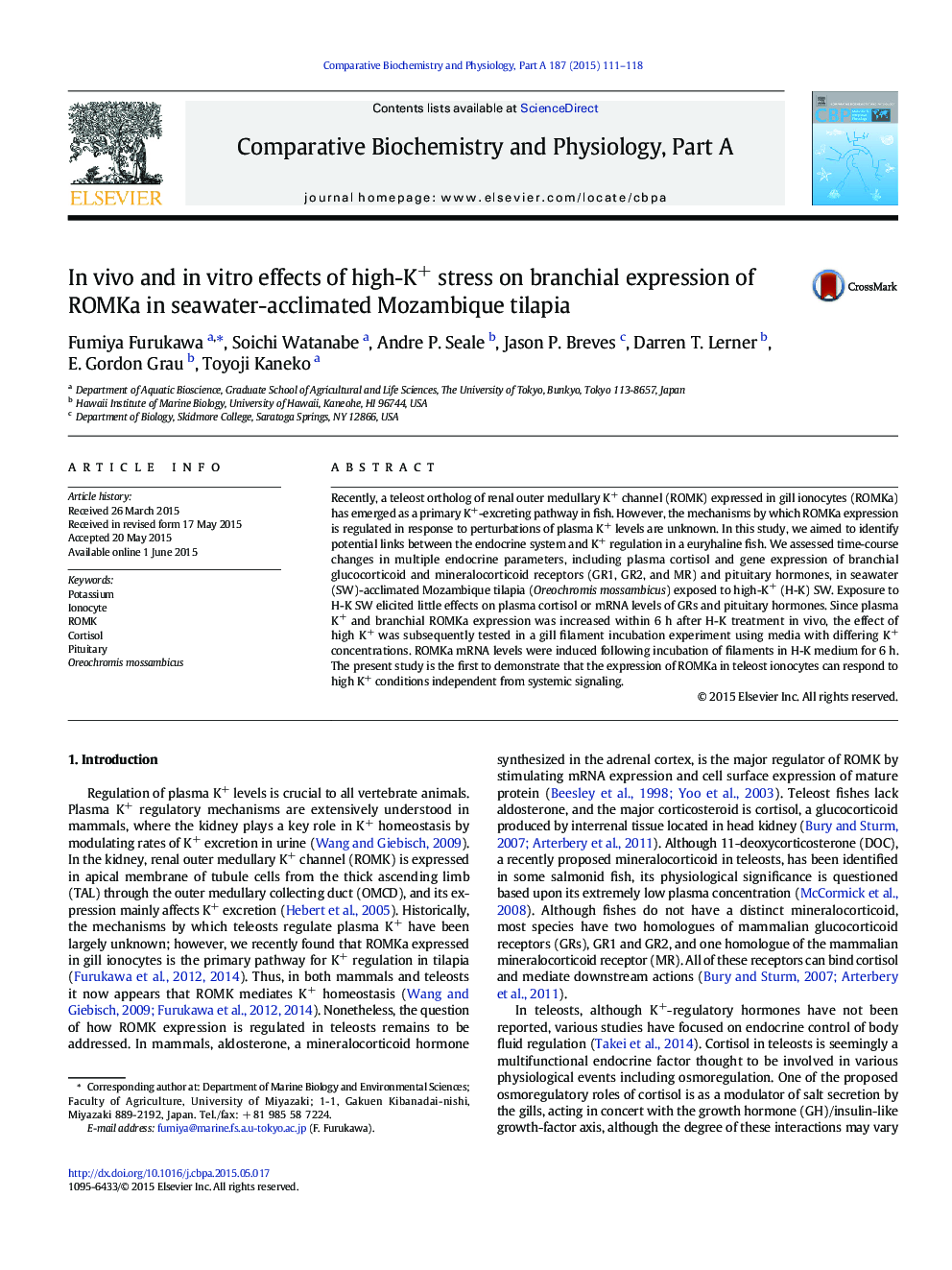| Article ID | Journal | Published Year | Pages | File Type |
|---|---|---|---|---|
| 1972025 | Comparative Biochemistry and Physiology Part A: Molecular & Integrative Physiology | 2015 | 8 Pages |
Recently, a teleost ortholog of renal outer medullary K+ channel (ROMK) expressed in gill ionocytes (ROMKa) has emerged as a primary K+-excreting pathway in fish. However, the mechanisms by which ROMKa expression is regulated in response to perturbations of plasma K+ levels are unknown. In this study, we aimed to identify potential links between the endocrine system and K+ regulation in a euryhaline fish. We assessed time-course changes in multiple endocrine parameters, including plasma cortisol and gene expression of branchial glucocorticoid and mineralocorticoid receptors (GR1, GR2, and MR) and pituitary hormones, in seawater (SW)-acclimated Mozambique tilapia (Oreochromis mossambicus) exposed to high-K+ (H-K) SW. Exposure to H-K SW elicited little effects on plasma cortisol or mRNA levels of GRs and pituitary hormones. Since plasma K+ and branchial ROMKa expression was increased within 6 h after H-K treatment in vivo, the effect of high K+ was subsequently tested in a gill filament incubation experiment using media with differing K+ concentrations. ROMKa mRNA levels were induced following incubation of filaments in H-K medium for 6 h. The present study is the first to demonstrate that the expression of ROMKa in teleost ionocytes can respond to high K+ conditions independent from systemic signaling.
